calsfoundation@cals.org
Greenwood (Sebastian County)
County Seat
| Latitude and Longitude: | 35º12’56″N 094º15’20″W |
| Elevation: | 520 feet |
| Area: | 10.82 square miles (2020 Census) |
| Population: | 9,516 (2020 Census) |
| Incorporation Date: | November 22, 1884 |
Historical Population as per the U.S. Census:
|
1810 |
1820 |
1830 |
1840 |
1850 |
1860 |
1870 |
1880 |
1890 |
1900 |
|
– |
– |
– |
– |
– |
– |
– |
204 |
587 |
491 |
|
1910 |
1920 |
1930 |
1940 |
1950 |
1960 |
1970 |
1980 |
1990 |
2000 |
|
1,124 |
1,374 |
591 |
1,219 |
1,634 |
1,558 |
2,032 |
3,317 |
3,984 |
7,112 |
|
2010 |
2020 |
|
|
|
|
|
|
|
|
|
8,952 |
9,516 |
|
|
|
|
|
|
|
|
Greenwood was founded in 1851, when its location was selected for the first county seat of Sebastian County. Greenwood grew slowly, but it attained some importance as a business center by 1860. Finally, with the advent of World War II and the establishment of Camp Chaffee, Greenwood’s population and business district grew again to help Greenwood become a flourishing city of western Arkansas.
Louisiana Purchase through Early Statehood
In January 1851, Sebastian County commissioners met to discuss the building of a new town on the banks of the Vache Grasse Creek. In March, the commissioners met and named the new town Greenwood in honor of Judge Burton Greenwood. Greenwood was also named as the seat for Sebastian County, but in 1854, the county seat was moved to Fort Smith, causing some local bitterness. In 1861, the state legislature divided the county into two judicial districts; it recognized Greenwood as the official county seat. Modern-day Sebastian County has Greenwood and Fort Smith as its county seats.
Civil War through Reconstruction
The Devil’s Backbone Civil War battlefield is one of Greenwood’s attractions. The Action at Devil’s Backbone was fought on September 1, 1863. Confederate troops led by Brigadier General William Cabell and Union troops led by General James Blunt met astride Backbone Mountain. The struggle for the famed Devil’s Backbone Ridge lasted three hours before the Confederates yielded to superior forces and withdrew, leaving behind their dead and wounded. Colonel Cloud, the Union commander, occupied the mountain, taking prisoners and receiving deserters. Cloud later returned to Fort Smith to assume control of the fort there.
In 1864, after the area had been taken under Union control the previous year, President Abraham Lincoln proclaimed the circuit court to be held in Greenwood for the entire county. In 1865, with the restoration of peace, courts were held in both Greenwood and Fort Smith. In 1871, the Arkansas General Assembly enacted legislation to divide the county into separate districts, with Fort Smith in the upper township and Greenwood in the lower.
In 1874, an African American man named Dumas was lynched in Greenwood.
Farming was a way of life for most in the area, and farming, as well as trapping, attracted many African Americans to Greenwood at the end of the Civil War. However, when coal was discovered in the early 1870s, coal mining became the chief industry. It remained so until 1965, helping to bring many immigrants to the Greenwood area. From 1880 to 1920, many Europeans (including German, Italian, Scottish, Irish, and Russian settlers), as well as Mexicans, moved to the area to pursue jobs in mining.
In 1887, the Iron Mountain and Southern Railroad was built from Fort Smith to Greenwood (a length of eighteen miles). There was a time when Greenwood shipped as many as 150,000 tons of coal, fifty-six cars of peaches, and 5,000 bales of cotton each year.
Early Twentieth Century
In 1929, Alexander High School was built on Main Street. It burned down the same year but was then rebuilt. In 2000, this same building was remodeled and is now the Greenwood School District Administration Building. The Greenwood Gymnasium was built between 1937 and 1939 and listed on the National Register of Historic Places in 2011. It continues to serve students as a gym and classroom space.
Greenwood has long had a reputation as a “sundown town,” or a place hostile to African Americans living there.
World War II through the Faubus Era
During World War II, the coal mines supplied much of the power used in manufacturing plants. However, the mines soon closed, and the building of Camp Chaffee took up most of the area’s farming land. Workers began to commute to Fort Smith to work in the various industries there.
Camp—later Fort—Chaffee helped Greenwood become an important part of the war. Indeed, the city’s population increased as many families, displaced with the loss of farmland and the jobs that went with it, moved into Greenwood. The city borders the Fort Chaffee Military Reservation.
Industry
Greenwood’s business district, built around the town square, was destroyed in August 1922 by a fire of undetermined origin. New buildings, built with native stone, were constructed to replace the old district. In 1968, however, the city’s business district was destroyed again when a tornado tore through the city, leaving thirteen people dead. Greenwood rebounded from this tragedy as well, attracting new businesses and more people in the process. Industries currently in the area include Win Leisure Products, Inc.; Alpha Packaging, Inc.; J. T. M. Enterprises; Precision Glass Bending Corporation; and Original Equipment, Inc.
Attractions
Greenwood’s Historic District includes the Old Jail Museum, the Vineyard Cabin (a restored two-room dogtrot cabin), an old barn with antique tools, a one-room school house, and the Coal Miners’ Memorial Park.
The Vineyard Cabin (circa 1848) was built by a bachelor school teacher named William Blaylock, who lived in the cabin and taught school there until his marriage in 1850. After his marriage, he added another room, connecting the two with a dogtrot running the depth of the cabin. The rooms were built of rough-hewn oak timbers, notched, stacked, and pegged to form the walls. It was moved from its original location, just outside the city, into Greenwood proper and restored in 1996.
The Sebastian Jail, the oldest building in downtown Greenwood, was built in 1892. It remained unscathed by both the 1922 fire and the 1968 tornado that destroyed most of the buildings in town. It is made from stone quarried from Backbone Mountain. During the Great Depression the building was used as a cannery. It was also used in the production of cotton mattresses by women hired by the Works Progress Administration (WPA). Restoration of the jail and its subsequent renovation into a museum, now on the National Register of Historic Places, began in 1994. The Old Jail Museum is now open for tours seasonally or by special arrangement.
Greenwood’s most noted citizen is John Sebastian Little, the twenty-first governor of Arkansas. He was the first white male child born in the new Sebastian County. Before being elected governor, he served six terms in the state House of Representatives.
Today, Greenwood is booming. The city nearly doubled in size from 1990 to 2000 and has continued to grow. Its residents can find the charm of a small city with all the conveniences of a larger one. The Scott-Sebastian Regional Library System, headquartered in Greenwood, provides public library service to five branches in two counties.
For additional information:
Greenwood, Arkansas. http://www.greenwoodarkansas.com (accessed June 4, 2022).
Greenwood, Sebastian County, Arkansas: 110 Years a County Seat, 1851–1961. Greenwood, AR: Farmers Bank, 1961.
Lajaunie, Carrah Efurd. “A Time Line: Major Events that Affected the People Who Would Make Greenwood, Arkansas ‘A Good Place to Live.’” The Key 3 (2000): 23–26.
Moore, Jerry H., and Lonnie C. Roach. No Smoke, No Soot, No Clinkers: A History of the Coal Industry in South Sebastian County. N.p.: Frank Boyd, 1974.
Wilkinson, Means. The First Hundred Years of Sebastian County. N.p.: M. Wilkinson, 1951.
Drucilla Hughart
Fort Smith, Arkansas
 Arkansas Broadway Hotel
Arkansas Broadway Hotel  Coal Miners Memorial
Coal Miners Memorial 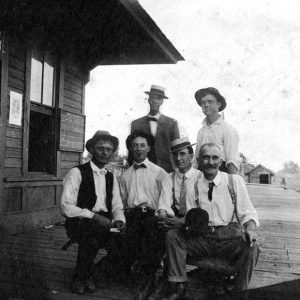 Greenwood Depot
Greenwood Depot 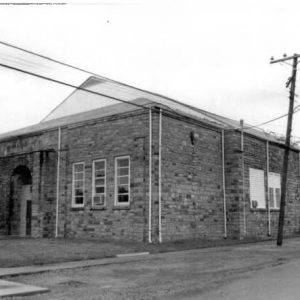 Greenwood Gymnasium
Greenwood Gymnasium 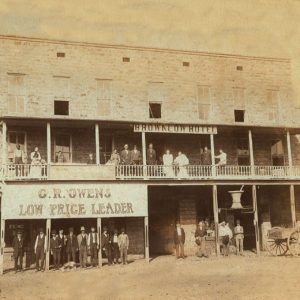 Greenwood Hotel and Store
Greenwood Hotel and Store 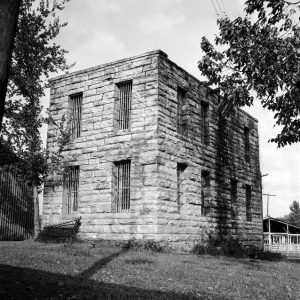 Greenwood Jail
Greenwood Jail  John Sebastian Little Monument
John Sebastian Little Monument 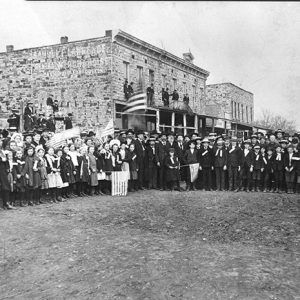 Governor John Little Reception
Governor John Little Reception  Old Jail Museum
Old Jail Museum 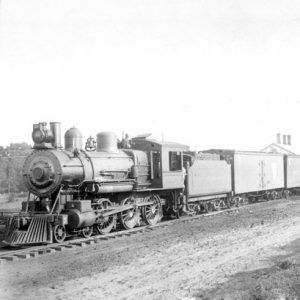 Peach Train
Peach Train 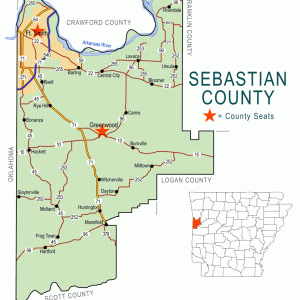 Sebastian County Map
Sebastian County Map  South Sebastian County Historical Society Brochure
South Sebastian County Historical Society Brochure 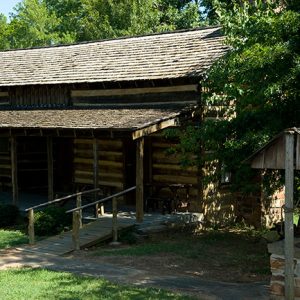 Vineyard Cabin
Vineyard Cabin 



The City Cafe was owned by Robert and Leona Whaley. It stood on the north side of the city square. It also served as the bus stop. Next door was a laundry and on the street north was Dawsons General Store. The City Cafe and laundry were destroyed in the 1968 tornado. Dawsons store survived.